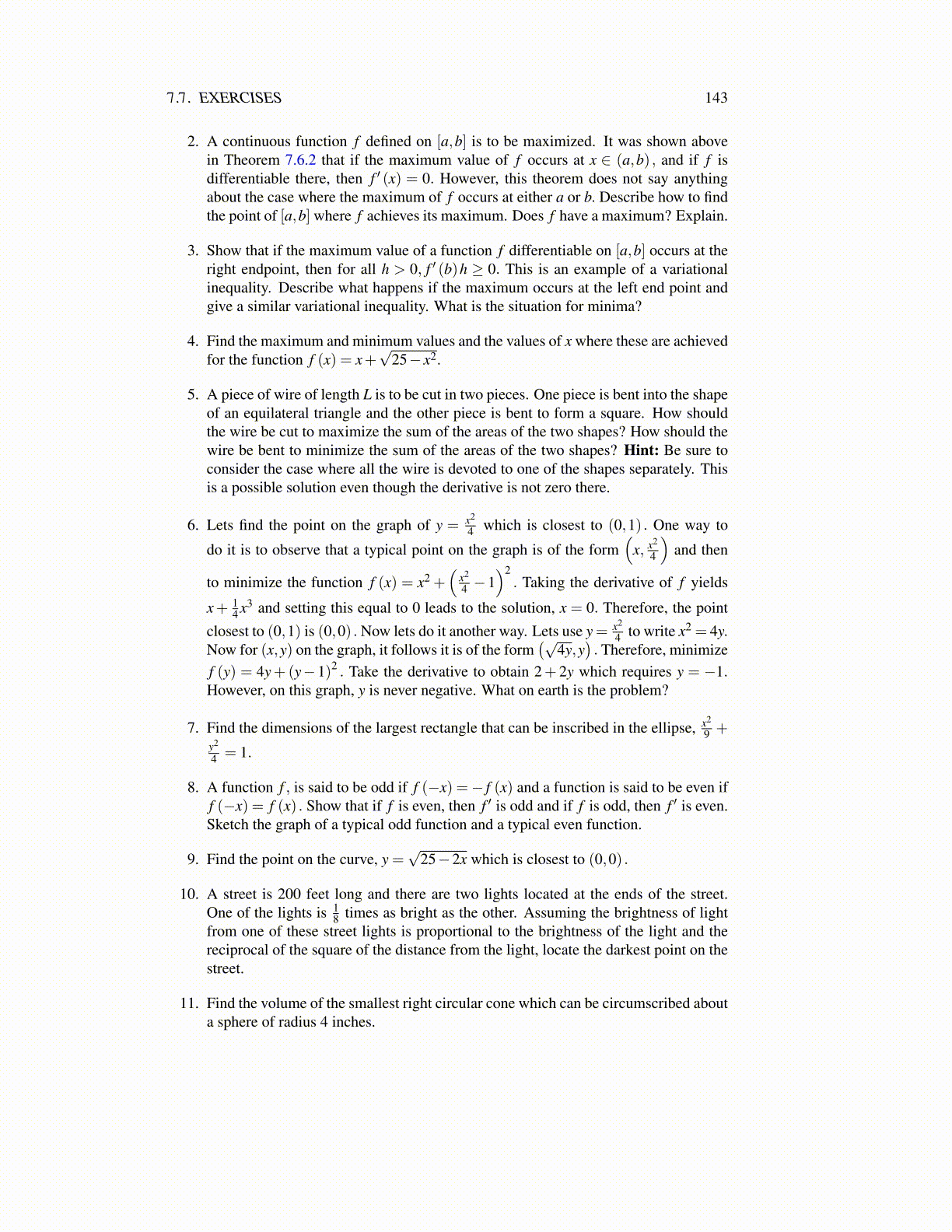
7.8. MEAN VALUE THEOREM 143
linear and equal to 12 ( fn(a)+ fn(b)) on the middle third of [a,b]. Sketch a few of
these and you will see the pattern. The process of modifying a nonconstant sectionof the graph of this function is illustrated in the following picture.
Show { fn} converges uniformly on [0,1]. If f (x) = limn→∞ fn(x), show that f (0) =0, f (1) = 1, f is continuous, and f ′(x) = 0 for all x /∈ P where P is the Cantor setof Problem 14. This function is called the Cantor function.It is a very importantexample to remember especially for those who like mathematical pathology. Noteit has derivative equal to zero on all those intervals which were removed and whosetotal length was equal to 1 and yet it succeeds in climbing from 0 to 1. Isn’t thisamazing? Hint: This isn’t too hard if you focus on getting a careful estimate onthe difference between two successive functions in the list considering only a typicalsmall interval in which the change takes place. The above picture should be helpful.
16. Let
f (x) ={
1 if x ∈Q0 if x /∈Q
Now let g(x) = x2 f (x) . Find where g is continuous and differentiable if anywhere.
7.8 Mean Value TheoremThe mean value theorem is possibly the most important theorem about the derivative of afunction of one variable. It pertains only to a real valued function of a real variable. Thebest versions of many other theorems depend on this fundamental result. The mean valuetheorem is based on the following special case known as Rolle’s theorem2. It is an existence
2Rolle is remembered for Rolle’s theorem and not for anything else he did. Ironically, he did not like calculus.This may be because, until Bolzano and Cauchy and later Weierstrass, there were aspects of calculus which werefairly fuzzy. In particular, the notion of differential was not precise and yet it was being used.